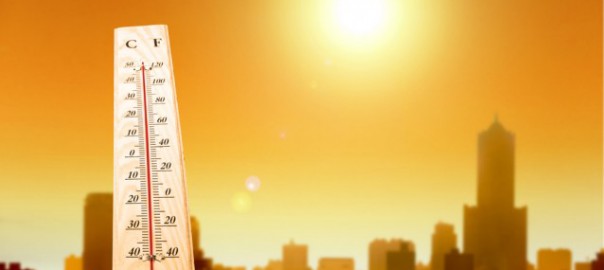New research from a major national lab projects that the rate of climate change, which has risen sharply in recent decades, will soar by the 2020s. This worrisome projection — which has implications for extreme weather, sea level rise, and permafrost melt — is consistent with several recent studies.
The Pacific Northwest National Laboratory (PNNL) study, “Near-term acceleration in the rate of temperature change,” finds that by 2020, human-caused warming will move the Earth’s climate system “into a regime in terms of multi-decadal rates of change that are unprecedented for at least the past 1,000 years.”
In the best-case scenario PNNL modeled, with atmospheric carbon dioxide concentrations stabilizing at about 525 parts per million (the RCP4.5 scenario), the four-decade warming trend hits 0.45°F (0.25°C) per decade. That means over a 4-decade period, the Earth would warm 1.8°F (4 x 0.45) or 1°C (4 x 0.25). This is a faster multi-decadal rate than the Earth has seen in at least a millennium.
Because of Arctic amplification, the most northern latitudes warm two times faster (or more) than the globe as a whole does. As this figure from the study shows, the rate of warming for the Arctic is projected to quickly exceed 1.0°F (0.55°C) per decade.
DecadalWarming
The decadal rate of temperature change for 40-year periods over various regions — if humanity takes moderate climate action. Rates of change are averages over land plus ocean in each region. Via PNNL.
Such rapid Arctic warming would be ominous for several reasons. First, it would likely speed up the already staggering rate of loss of Arctic sea ice. Second, if, as considerable recent research suggests, Arctic amplification has already contributed to the recent jump in extreme weather, then the next few decades are going to be utterly off the charts.
Third, such rapid Arctic warming implies that the rapidly-melting Greenland ice sheet — already made unstable by human-caused warming — is likely to start disintegrating even faster, which in turn will push sea level rise higher than previously estimated, upwards of six feet this century.
Fourth, such rapid warming would serve to accelerate the release of vast amounts of carbon from defrosting permafrost — the dangerous amplifying carbon cycle which has already been projected to add up to 1.5°F to total global warming by 2100.
There is, of course, “internally generated variability” in the Earth’s climate system — which has been linked to variability in the Pacific Ocean — that can cause the rate of warming to slow down or speed up for a decade (and occasionally longer). That was the point of a February study on what has mistakenly been called the “hiatus” in global warming.
That hiatus was in fact merely an apparent slowdown in the rate of warming, primarily found in the U.K. Met Office’s dataset. But the Met Office uses the Hadley temperature record, which excludes the Arctic (!) — the very place on the planet that has been warming the fastest. When scientists incorporated Arctic warming into the Met/Hadley record using other data sources (such as the satellites), the slowdown all but vanished.
Read more: Climate Progress
